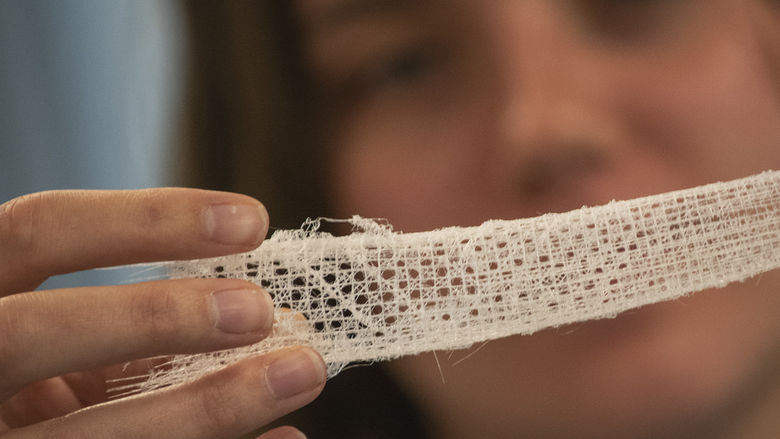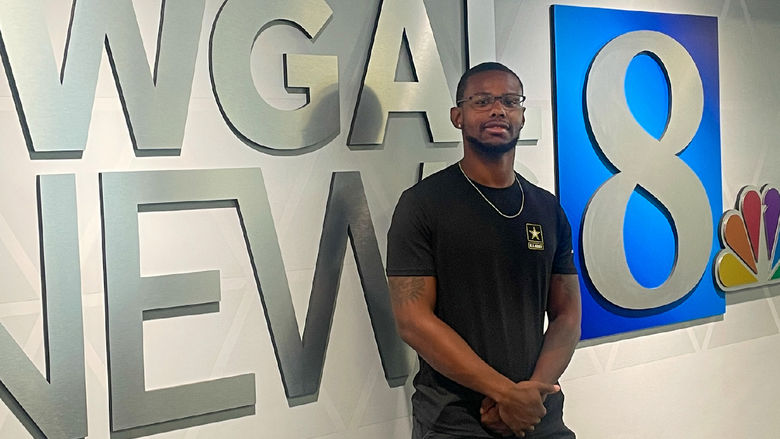

This dialog contains the full navigation menu for this site.

Diversity, equity, and inclusion (DEI) are fundamental to the University’s values and mission to support all community members.
Penn State Harrisburg shares these values and mission with a commitment to foster a diverse, equitable, and inclusive learning environment. The college has established numerous groups to help accomplish this goal.
In addition, Penn State Harrisburg recently created two new roles to lead the college’s DEI efforts. Dr. Wanda Knight serves as the college’s assistant dean for DEI and Evan Williams, the college’s assistant director for student DEI.
Knight leads the development and implementation of strategies, that create and support a diverse, equitable, inclusive, and welcoming environment at the college. Williams works with students, providing training and programming.
Knight said that the goal is for DEI efforts to be intentional and strategic. “The outcome is to see that because of DEI, everyone has a genuine opportunity to thrive in whatever way that means for them,” she said.
In recent interviews, Knight and Williams shared their thoughts.

Dr. Wanda Knight
Knight: Diversity, equity, and inclusion are inextricably linked. They
are also distinct concepts.
Diversity: Everybody is different. Diversity describes observable and non-observable individual differences (life experiences, learning styles, personality types, among others) and group/social differences (race, ethnicity, gender identity and expression, age, ability, among others) that can contribute to campus vibrancy and a dynamic learning community.
Equity: Everyone wants to be treated fairly. Many people conflate the terms "equity" and "equality." However, these terms are not synonymous. Equality refers to sameness, while equity refers to fairness. Equity requires we recognize barriers and advantages as everyone does not start at the same level. Acknowledging and confronting a history of systemic exclusion impacting specific populations within academic settings, it behooves us to create conditions that support fairness and justness based on individual needs and circumstances.
Inclusion: People want to be recognized for their uniqueness. No one wants to be excluded because of differences or feel they should hide some part of their identity or change to fit in. Inclusion describes proactive, intentional, and thoughtful engagement with diversity to the extent that all can contribute fully and effectively throughout the campus community and feel a sense of welcoming and belonging.
There is much to be gained, including greater personal, social, racial, and cultural awareness.
Higher education attracts people from all walks of life, from all over the world. So, intentionally or by default, we are attracting diversity. Institutions need to leverage diversity to create a campus community welcoming and accepting of all identities and perspectives. In my opinion, higher education should focus on intellectual and cultural engagement with diversity. When an institution commits to inclusive excellence, we intentionally design experiences that honor varied identities, cultures, experiences, and perspectives.
A diverse and inclusive learning culture provides opportunities to work with people beyond our insular communities, people unlike ourselves who shape, expand, challenge, enrich, and deepen how we view the world.
Higher education shapes students, who in turn shape the world.
Perseverance. Representing historically marginalized communities within a majority institution or organization is difficult. Most of the individuals doing the heavy lifting towards transforming organizations into inclusive spaces tend to be those who face discrimination. Yet, those impacted by systems of oppression continue devoting their talents and energies despite opposition or resistance to change from majority populations. I perceive some resistance stems from fear, misunderstandings, miseducation, blame, and guilt, among other areas.
It has been my experience that people, in general, are not comfortable with being uncomfortable, specifically when discussing race. Moreover, because people perceive race as a taboo subject, especially in mixed company, people are afraid to talk about race and avoid the topic altogether. Yet, we all have a potentially significant role in racial learning, healing, reconciliation, and bridging divides.
DEI leaders and equity workers who work in caregiving spaces tend to be absent from discussions concerning our well-being, as people take for granted that we do not experience significant societal, institutional, or organizational challenges concerning our identities that warrant considerations or resources. On the contrary, DEI work is complex and can be traumatizing and draining. Because there is much work to be done, we need to prioritize time, energy, and space for restorative self-care to better support the communities we serve.
Embrace difference. This statement may sound cliché,
but the concept is an important one. Often people are more
comfortable talking about what we have in common, but
commonalities are not what gets us in trouble. Instead, it's
our attitudes and beliefs concerning difference. When we
welcome difference and see it as an asset and not a liability,
we are moving closer to the ideals of DEI.
Penn State Harrisburg has a bright future. We take pride in the fact that we are a diverse community. We could be a model for others to learn about diversity and diversity-focused initiatives that support the first generation, historically marginalized low-income, or underrepresented populations. We could leverage our diversity to value diverse perspectives, be an anti-racist campus, close equity gaps, break barriers and expand pathways for access and success for all campus community members to thrive. We can always work against something, but what are we working toward and building in its place, and how can we move forward with integrity, passion, and compassion?

Evan Williams
Williams: DEI initiatives impact a student's college experience because they allow those in marginalized and minoritized populations to be "seen and heard." In my undergraduate years, I went to a predominantly white university and as a black queer student, I did not feel seen nor heard on that campus. Since then, higher education has made great strides to create DEI initiatives that provide co-curricular learning and engagement to allow campus communities to embrace and be part of building brave and inclusive spaces for our students to feel like they belong.
I have listened to students around campus...and witnessed several students say they feel like they can be themselves when they come to diversity related programs. The programs provide a space to help build community and to learn from different students from various cultures and backgrounds. I also believe that DEI programs provide exposure for students who have not been in diverse environments before, so it opens up the chance for students to have their personal experiences enriched.
A longstanding initiative, the Multicultural Academic Excellence Program (MAEP), is based on building community with four pillars: academics, culture and society, professionalism, and health and wellbeing. Keeping this initiative active and thriving continues to help our campus to be more inclusive. In addition, we are focused on creating inclusive programming such as arranging educational trips, hosting a Social Justice Workshop, holding a National Coming Out Day program, and more.
One of the main areas of opportunity I see includes creating brave and inclusive spaces on campus for students to be their authentic selves. Personally, I think if students do not feel like they belong on campus then we are doing a disservice.
Providing brave spaces means providing places for students – and faculty and staff – to share and discuss issues and have civil discourse. Other spaces – such as the Pride Room and the Oliver LaGrone Cultural Arts Center – provide a physical place for students to connect with others and be themselves without judgement.
Another area of opportunity is working alongside Dr. Wanda Knight, an expert who has been able to shake grounds. Recently, we presented to our incoming class around diversity, equity, and inclusion. She provided the framework of DEI, and I provided the student experience portion.
I operate with an open-door policy. Therefore, if my door is open, students can feel free to come by and chill or have discussions with me. Also, I would highly recommend students be part of MAEP. Near the end of our program, I always leave time for conversations and that is a great space for students to be their authentic selves and express how they feel.


